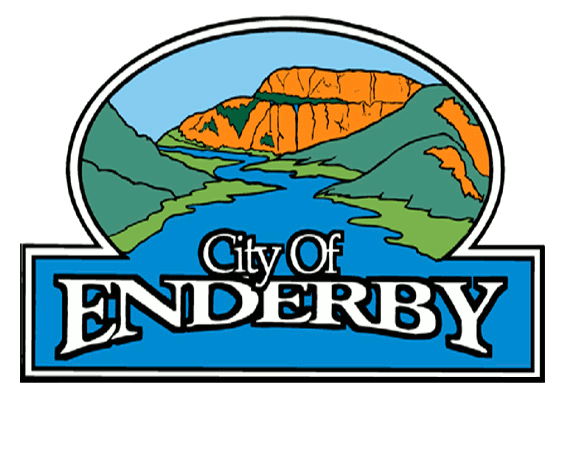The City of Enderby would like to thank everybody who is taking the time to learn more about the Cliff Avenue renewal. This is an important initiative and we are excited by the interest and support!
Below are some facts to clarify why this project is proceeding and why we are seeking your consent to borrow.
Why use the Alternate Approval Process rather than a Referendum?
An Alternate Approval Process only measures the strength of opposition to borrowing. A Referendum measures the strength of support and opposition to borrowing. Each is useful in different circumstances.
When a project involves replacement of necessary infrastructure, such as roads, water, and sewer, the Alternate Approval Process is a more cost-effective way to obtain consent to borrow funds, as the project needs to proceed.
When the project involves unnecessary (but still important) infrastructure, such as recreational amenities, a referendum is a more appropriate method for gauging both support and opposition.
- Alternate Approval Process = necessary infrastructure
- Referendum = unnecessary (but still important) infrastructure
How much does Cliff Avenue cost relative to other road projects? Is this the first time that the City has used the Alternate Approval Process?
Below is a summary of our Road Projects, borrowing amounts, and method of obtaining elector approval over the last few years. All road projects used an Alternate Approval Process (AAP).
| Year | Project | Total Project Budget (2015 $) | Amount Borrowed | AAP Process Used (Y/N) |
|---|---|---|---|---|
| 2016 | Cliff Ave | 1,895,000 | 467,000 | Y |
| 2015/16 | Vernon St. | 1,755,000 | 0 | N/A |
| 2014/15 | Mill Ave (Hwy to Maud) | 1,104,500 | 450,000 | Y |
| 2014/15 | Belvedere St. (Mill to Cliff) | 218,000 | 0 | N/A |
| 2013 | Sicamous St. (Mill to Hubert) | 510,500 | 312,000 | Y |
| 2012 | Knight Ave (Hwy to end of School), Regent Ave (Hwy to Sicamous), Storm Drainage (Regent) | 2,420,000 | 1,530,000 | Y |
| 2012 | Sicamous St. (Mill to Knight) | 255,500 | 205,000 | Y |
| 2011 | Sewer Plant Upgrades | 1,225,000 | 200,000 | Y |
| 2011 | Hwy Sewer Upgrades | 908,000 | 400,000 | Y |
Was it truly “necessary” to proceed with Cliff Avenue?
Cliff Avenue is at the end of its life. The road was described in a geotechnical report as being in “poor to very poor condition.” The sidewalks are heaving and present tripping hazards. The road curbs no longer drain properly. The water lines are at or beyond the end of life.
The water lines are also among the most critical infrastructure in town, as they transport water from the treatment plant to the reservoirs, which is needed for storage and fire flows. In the long run, it is more cost effective to replace infrastructure proactively rather than reactively. This is increasingly so for critical infrastructure.
Waiting until critical infrastructure fails is significantly more costly and negatively affects residents and businesses to a greater degree – there is a higher impact from loss of service, a greater disruption to economic activity, more risk exposure if a loss of service occurs during an emergency, and costs more to repair. Unplanned spot repairs cost considerably more per linear meter than a planned replacement and do not eliminate the need to replace the infrastructure at the end of its life.
I heard that the road was not yet at the point of failure. Is this true?
Cliff Avenue is in a dilapidated condition and it is either failing or nearing the point of failure (it varies from section to section). When Council first began looking at the project, it was relying upon a cursory surface analysis performed in September 2015. This was used to provide some general insight into several different projects so that Council could weigh its priorities. The memo to Council stated that, following Council’s direction, “Staff can begin to identify options within the chosen scope and work towards assessing condition and consistency with known infrastructure needs…”
At that time, when Council first considered the project, there was some hope that the road base could be re-used. However, the geotechnical analysis revealed that the road base was in “poor to very poor” condition and required replacement; not replacing the road base would be akin to throwing good money after bad. The age of the water lines were such that they should be replaced.
I have heard that the City has enough money in surplus and reserve funds to completely finance this project without requiring borrowing or raising taxes significantly. I heard that there was a report to Council stating that taxes would only need to be raised “approximately 0.5% to make up for lost interest revenue on the use of surplus funds.” Is this true?
This statement does not accurately describe what was said in the report that Council received. It quotes a sentence fragment out of its proper context. The full context, from the memo, is as follows:
This was one of 5 funding options considered by Council. It was not the preferred option, for the reasons mentioned above.
Council ultimately chose an option which would protect the City financially and ensure that it was positioned to avoid debt servicing and higher administrative costs associated with revenue anticipation borrowing while also having available adequate funds to put towards the future, including Provincial or Federal Government grant opportunities.
Any significant Provincial and Federal Government grant opportunity expects a local contribution. If that local contribution requires borrowing, the grant application will be ranked lower as it is not a “sure thing.”
There are a lot of other beautification projects in the community that people have been asking for but never any budget for. For example: the Barnes Park upgrades, Kid’s Spray Park, Ball Field upgrades and River Walk lighting and expansion. Why is Cliff Avenue getting all of the focus?
These projects are at varying stages of implementation. Many of these projects – and the decision-making to proceed – are only partially within the control of Council, although it is working to advance each of them. All of the above projects draw on different funds than those which are being used for Cliff Avenue.
- A Barnes Park concept plan was completed last year and the first result of that – green gym equipment – was installed this spring.
- A spray park or other water-based recreational amenity for young children is supported and money is being reserved by the Enderby & District Services Commission for that purpose.
- A plan for expanding and lighting the River Walk has been completed, which will be used to seek grant funding.
- Potential improvements to the ball diamonds are being discussed and staff have encouraged the user groups to identify and prioritize their desired improvements so that these items may be injected into the capital planning process. In the meantime, improvements to Diamond 3 will occur very soon.
There are also many other initiatives being moved forward by Council. Local government consists of a diverse group of stakeholders and must balance many competing priorities and timelines at any given time.
The fact that one project occurs before another does not necessarily delay or take money away from the other.
There was a lack of public consultation around this project. There has been no end of community planning and sustainability boards over the past number of years and nowhere was a plan or theme for Cliff Avenue discussed or planned for.
This is inaccurate. Both recent planning/sustainability public consultation initiatives – the Enderby & District Vitalization initiative and the Enderby Integrated Community Sustainability Planning process – highlighted the need to invest in the downtown, including Cliff Avenue. This feedback is reflected in its design. A variety of themes were identified, including paddlewheelers, Splatsin art, nature, and heritage. It was ultimately determined that “The River” is the common thread running through all of those suggestions and could provide a coherent, flexible theme.
Below is a select summary of comments and suggestions made by the public during public consultation sessions, which are either directly or indirectly connected with the renewal of Cliff Avenue:
| Enderby Vitalization Initiative | Integrated Community Sustainability Plan |
|---|---|
| 2012; open house and working groups | 2012; open house and working groups |
|
|
Council’s decision making has been transparent, in open meetings which anybody could attend (and ask questions during the public question period) in front of the media (who reported on the development of the project regularly).
This included the following meetings:
- September 8, 2015 public meeting – Council considers potential road projects for 2016.
- November 2, 2015 public meeting – Council reviews preliminary layout options with engineer and architect.
- December 7, 2015 public meeting – Council considers concept design and funding.
- January 26, 2016 Open House – Council presented the concept design and heard feedback from the public, which was incorporated into the detailed design.
- February 1, 2016 public meeting – Council considers loan authorization bylaw.
- March 23, 2016 public meeting – Council awards construction contract following tender close.
This is in addition to the consultation that individual Councillors and the Mayor did with the public and businesses as part of their regular activities.
The Federal Government has been talking about infrastructure funding. Should City Council have waited for higher levels of government to help fund the project? Our new Prime Minister is promising infrastructure grants that will be available over the next number of years.
Enderby has a significant infrastructure deficit and a backlog of projects for which it will be pursuing grant funding once it becomes available.
The fact that Federal Government grant funding was unavailable at the time that the project was put in motion does not mean that the City will not be pursuing grant funding for many other projects – some of which are much more likely to be successful at receiving such funding.
The Federal Government typically gives out grants only for specific purposes. Early indications are that the federal funding will focus on major transit infrastructure, which means that the funds will likely flow towards large urban centres.
Grant funding is wonderful when it occurs, but it tends to be the exception to the rule and should not be relied upon, as it will not provide the ongoing funds needed to provide good stewardship of the public’s assets. In the absence of that good stewardship, operating and maintenance (O&M) costs will continue to increase, which places the City’s finances and its asset management practices on a downward spiral. Ignoring the infrastructure deficit costs more in the long run.
Should City Council have waited for the Ministry of Highways’ long-term plan for the highway through Enderby before committing to a project that may require significant modification if Highway 97A through town moves closer to the bridge?
The new design for Cliff Avenue was developed with the understanding that there may be a realignment of Highway 97A in the future. While it is not known if or when this may occur, nor what the actual alignment may be, the potential that it would intersect with Cliff Avenue was considered at the outset.
A similar approach was taken when looking at the Vernon Street re-build, which is nearly complete. Enderby cannot sterilize itself against all uncertainties, but it is taking prudent steps to ensure that the design minimizes conflict with any future change to Highway 97A.
Last Updated on May 3, 2016.


